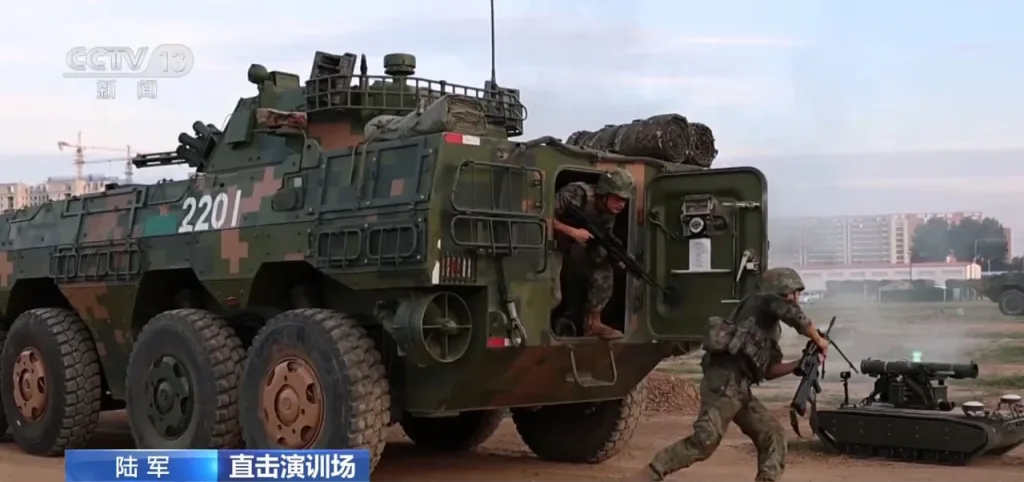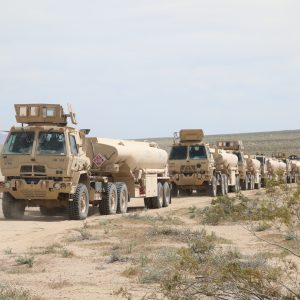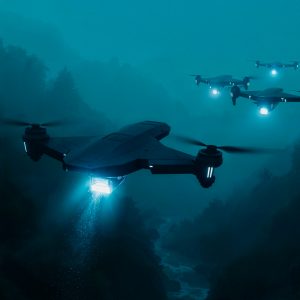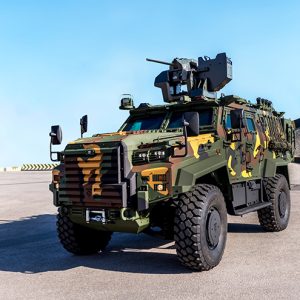
PLA tests rocket-armed ground drones
China has showcased PLA unmanned ground vehicles (UGVs) armed with rocket launchers during semi-urban training aired on state television. The vignette paired ZBL-08 (Type 08) infantry fighting vehicles with small, teleoperated ground drones to probe, suppress and disrupt fortified positions ahead of dismounted assaults.
What the broadcast reveals
According to open-source observers, an armored infantry element from the 83rd Group Army under the Central Theater Command conducted the exercise. The unit executed semi-urban assault drills in which UGVs moved ahead of the infantry, engaging or suppressing targets while ZBL-08 IFVs provided mobility and overwatch. The state-run broadcast matters as signaling: Beijing aims to normalize robotic support for mechanized infantry rather than treat it as a one-off demonstration [2].
Key Facts
Platforms: Small tracked UGVs carrying rocket- and grenade-type launchers; some chassis featured loudspeakers—suggesting messaging, deconfliction, or deception roles [2].
Control: First-person-view (FPV) goggles and handheld manipulators allowed operators to maneuver robots from covered positions, mirroring small-UAS ergonomics.
Combined arms: ZBL-08 IFVs enabled rapid dismount and overwatch while UGVs absorbed first contact, forcing defenders to reveal positions before infantry closed.
Tactical logic: robotic skirmishers in urban corridors
The tactical logic is straightforward: use PLA unmanned ground vehicles as expendable skirmishers to scout dead ground, place obscurants or energetic payloads, and trigger enemy fires prematurely. In street canyons and confined approaches, even modest standoff can spare infantry and hulls from the first volley. Teleoperated chassis with cheap launchers present an affordable way to dilute defender advantage without risking high-value vehicles.
These robots also serve as bait. By pushing a noisy, visible signature into a suspected kill zone, commanders can provoke defenders into disclosing firing positions. Once detected, IFVs and dismounted elements can mass more deliberate fires or bypass. This “attritable shield” concept is increasingly common across contemporary conflicts, but the PLA’s televised integration with an established IFV family suggests a shift from ad-hoc trials to repeatable unit-level drills.

Control architecture: FPV benefits and constraints
FPV goggles and gamepad-style controllers lower the training barrier by leveraging muscle memory from small UAS operations. However, teleoperation in semi-urban environments faces line-of-sight issues, multipath interference and signal occlusion by reinforced structures. Units will need retransmission nodes, pre-planned “micro-bounds,” and explicit deconfliction of radio plans with IFV intercoms, data links and electronic-protection postures.
Latency management is central. If the UGV’s video feed lags even slightly during a short bound, desynchronization can occur between robot movement and IFV overwatch. Doctrine will likely specify short, pre-briefed waypoints and time-based bounds tied to the IFV’s hull position, with emergency-stop protocols and visual identifiers to prevent fratricide at close quarters.
Why pair UGVs with the ZBL-08 family?
The ZBL-08 offers protected mobility and sustained firepower but remains vulnerable to short-range anti-armor threats near corners, courtyards and interior nodes. Deploying PLA unmanned ground vehicles ahead of the hull mitigates exposure during the breach. Small robots can emplace smoke, disrupt sightlines, deliver low-cost munitions, or tow demolition charges through apertures too risky for a sapper team. In effect, UGVs add an attritable layer to the IFV’s close-combat system without compromising tempo.
Integration with the Type 08 family also simplifies logistics and command. Crews already trained on the platform’s C2 habits can supervise a tethered UGV pair, keeping the cognitive load within familiar bounds. The visible pairing in the broadcast hints that the PLA is exploring “companion robots” as organic tools for mechanized infantry rather than stand-alone engineering assets.
Loudspeakers on UGVs: plausible roles
Loudspeakers mounted on several chassis are unusual but plausible. They could broadcast surrender instructions, coordinate civilian movement, or simulate troop presence to stretch a defender’s attention. They also offer a low-cost way to communicate with dismounts under noise and stress when line-of-sight is broken. Whether this is a standardized payload or a unit-level experiment remains unclear from the footage.
What remains unknown
State media and secondary reporting provide few technical details. Open questions include radio architecture (encryption, anti-jam features, mesh capabilities), autonomy tiers (teleoperation only vs. waypoint and semi-autonomous modes), endurance, and payload modularity. It also remains unclear whether the loudspeaker-equipped variants are prototypes for stability operations or a true combat adjunct. Until serial designators or industry releases appear, these systems should be treated as indicators rather than proof of fleet-wide fielding [2].
Implications for NATO and partners
For NATO and partner forces, the lesson is not the hardware itself but the integration. Units that already train FPV-UAS teams can crosswalk those skills to ground platforms, updating communications plans for urban canyons and writing safety cases for mixed teams operating within meters of tracked vehicles. The PLA’s example supports a broader trend: robotic enablers acting as sacrificial scouts and breaching aids that raise survivability for mechanized infantry while preserving tempo.
Practical steps include identifying mission profiles where UGVs add asymmetric value—breaching, deception, short-range ISR—and ensuring logistics can absorb batteries, repair parts and controller spares. Crucially, commanders should wargame how UGVs change enemy behavior at first contact. If robots reliably pull early fires, defenders lose the element of surprise and reveal their kill chains at manageable standoff ranges.
Context & further reading
For foundational concepts on distributed autonomy and swarming that intersect with UGV tactics, see our primer on swarm employment in defence ecosystems [1]. For the state-media segment and OSINT thread that surfaced this event, consult the Defence Blog report and the original social post [2] [3].
Further Reading
- Breaking Defense — UGV coverage archive
- Jamestown Foundation — Autonomous Battlefield: PLA lessons
- The War Zone — Chinese UGVs in assault training
References
- Defence Agenda — Unleashing the Power of Swarm Technology
- Defence Blog — China tests new ground drones with rocket launchers
- X — Jesús Román: 83rd Group Army drill captures
Featured image alt text: “PLA unmanned ground vehicles with rocket launchers supporting ZBL-08 IFVs during semi-urban drills”.








